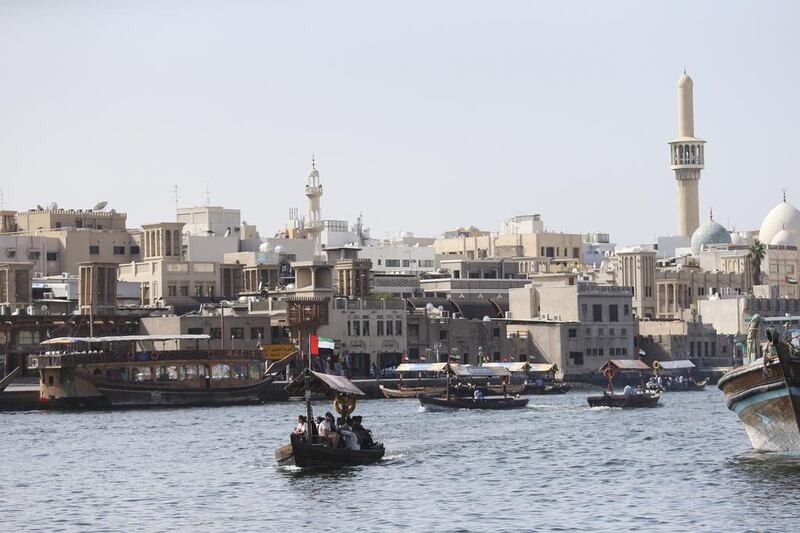A new cultural centre that pays tribute to the UAE’s fishing and pearl diving traditions while seeking to reconnect younger Emiratis with their maritime heritage, Somayeh Ghorbani’s Crossing of the Coast, has just been awarded an architectural prize at the 10th annual IDA Design Awards in Los Angeles.
The quayside scheme may only be a student project, Ghorbani developed the concept in her final year at the American University of Dubai, but in choosing Deira as the location for her proposals, the 33-year-old has joined a long list of architects and developers who have used the neighbourhood as a canvas for their plans.
For many people Deira and the creek, the Khor Dubai, with its dhow moorings, abra water taxis, and souks is the very essence of the old city - the place where everything started – but even though it is as central to the identity of ‘old Dubai’ as the Burj Khalifa is to its present, Deira is not a place of stasis but of change.
The neighbourhood featured at the heart of Dubai’s first and unrealised master plan, which was drawn up in 1960 by the British architect John R Harris for the emirate’s ruler, Sheikh Rashid bin Saeed Al Maktoum and only 20 years later it became the site of one of Dubai’s earliest tilts at the international luxury tourism market with the opening of the Hyatt Regency Hotel on 5 May 1980.
Not only did the hotel contain one of Dubai’s earliest ice rinks but it also boasted the city’s first revolving restaurant, Al Dawar, which was mounted on the building’s 25th floor.
When it was completed the Hyatt Regency, which still dominates Deira’s Corniche, offered uninterrupted views across the Creek and towards Sharjah and if the master developer Nakheel had got its way, the panorama would have been dominated by Palm Deira, which was launched in 2004 with the intention of adding an extra 400 kilometres of prime real estate to Dubai’s crowded shoreline.
Covering 80-square-kilometres, Dubai’s largest palm would have measured 14 kilometres in length and 8.5 kilometres in width, but thanks to the global financial crisis of 2008 the scheme was cancelled and was eventually reborn as the 15.3 sqkm master development Deira Islands, the first phases of which, islands ‘A’ and ‘B’, are now under construction with an expected completion date of 2020.
In 2012, the Dubai Municipality announced a new, 3km-long Dhow Wharfage Development Project, which was designed to increase the annual capacity for cargo handling on the Creek to an estimated 1.7 million tonnes and to allow more than 400 dhows to dock at any one time, but by 2014 only a handful of dhow operators had made the move from their traditional moorings near Deira's historic spice souk to a new location opposite Deira Islands along the Deira Corniche, by which time Dubai Creek’s bid for Unesco World Heritage status had been rejected.
Deira and the Khor were added to Unesco’s list of tentative World Heritage sites in 2012 and Dubai’s proposal for their inclusion was lodged formally a year later but was eventually rejected in March 2014 following a report from The International Council on Monuments and Sites, the body that advises Unesco on the conservation and protection of cultural heritage places.
"Khor Dubai's capacity to symbolize or represent an outstanding example of urban and residential development... is rather limited as a result of its significant reduction of historic architectural substance and urban patterns as well as changes of the shape of the mouth of the creek," the report concluded.
"The neighborhoods were partly demolished and reconstructed and in other cases extensively restored and now provide an impressive imagination of what the city may have looked like half a century ago."
Now that the possibility of Unesco listing has receded and the need to conserve the historic fabric of the khor and its neighbourhoods has diminished, the future of Deira is once again in the balance. The progress that’s being made on Nakheel’s Deira Islands scheme offers the clearest view of what this future might look like but given the area’s track record, the only certainty is that this future is likely to change.






